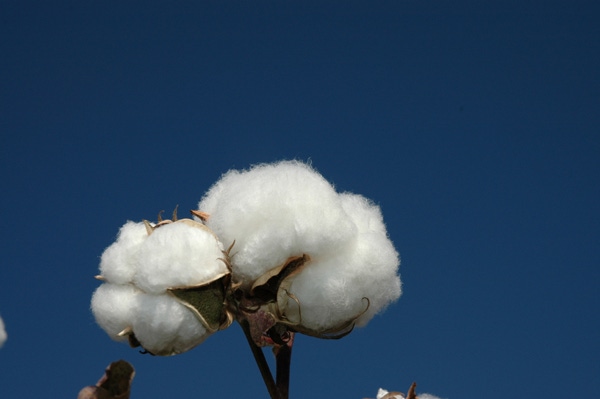
The recent Grand Opening ceremony for the Monsanto Texas Cotton Breeding and Technology Center in Lubbock underscored Monsanto’s commitment to the Texas cotton industry and to developing varieties that adapt to the region that produces 60 percent of the nation’s cotton.
“Cotton is big in Texas,” said Ted Crosbie, vice-president for Global Plant Breeding for Monsanto. “That’s why we built this megasite in Lubbock. This will be our main cotton breeding center.”
Trevor Hohls, Global Cotton Breeding Lead, said the center will include three breeding programs — one for the High Plains, one for the Rolling Plains and one as a discovery team, working on value-added characteristics.
Breeding goals
Research and breeding goals will include drought tolerance, nematode resistance and continuation of improved yield and quality. Hohls said the discovery team will interface with lab and field efforts. The team will use genetic markers to “speed up the process of developing new varieties,” he said.
Work on traits such as nematode resistance will be crucial with the recent announcement that Temik, a long-used and effective soil applied insecticide, will be phased out within the next few years.
Breeding efforts will include traditional and transgenic work. “We will look for the underlying genes that control trait differences,” Crosbie said. “Our goal is to develop better varieties for Texas.”
Hohls said the Deltapine class of 10 offered a good start on that goal. “Both DP 1032 B2RF and DP 1044 B2RF have done well.” He said storm proof characteristics make these varieties well suited to the sometimes harsh conditions of High Plains’ cotton production.
The Texas emphasis represents a change, Crosbie said. “The name Deltapine reflects the past focus. Texas was not a priority in the past. But now, 60 percent of the country’s cotton crop is grown in Texas and 40 percent is grown within an 80-mile radius of Lubbock. We needed to resource Texas and this is an appropriate emphasis — to produce varieties for the Texas market.”
He said the High Plains location offers an opportunity to tap into a knowledge base for cotton production and processing. “We have key growers here.”
Hohls said the area also offers opportunities to test for characteristics important to West Texas cotton production. “A key focus will be on drought tolerance,” he said “We will look at both breeding and biotech solutions.”
Water efficient
Many West Texas growers currently irrigate but in-season water availability varies widely. Some are able to irrigate to 100 percent of evapotranspiration rate; others can apply no more than 40 percent.
“We want to test for yield with different levels of ET,” Hohls said, “and release varieties best suited to different ET levels for maximum return. Our focus is on profitability.”
The new center will have 20 full-time employees (up to 50 in peak work seasons), including three cotton breeders.
“We will demolish the buildings at our Hale Center facility,” Hohls said. “We will keep an equipment shed and the fields for testing.”
Hale Center employees will work out of the new Lubbock facility.
The Monsanto Texas Cotton Breeding and Technology Center cost $10.5 million to build and is located on a 12.2 acre site within the Lubbock Economic Development Alliance Business Park.
“Megasite” is a term Monsanto uses to describe a research facility which houses multiple programs focused on improving genetic performance. Monsanto has another cotton megasite in Scott, Miss..
The megasite joins three other Monsanto facilities located in Texas — the Hale Center Research Farm and testing programs in Haskell and Corpus Christi.
“Our Integrated Texas Testing Program, which includes new efforts in South Texas, will be based here, and our Biotechnology Trait Development Pipeline team will be researching water use efficiency,” said Kendall Bonds, Monsanto’s U.S. Cotton Testing Lead. An Environmental Safety & Health team is also located in the Lubbock facility.
The Texas Cotton Breeding and Technology Center is part of Monsanto’s increased emphasis on breeding and testing. “We have doubled the size of our U.S. testing operations, in both number of locations and plots,” Hohls said.
The Texas Center includes state-of-the-art research equipment to process cotton to lint and seed. Special planting and harvest equipment support the variety trial sites.
About the Author(s)
You May Also Like






